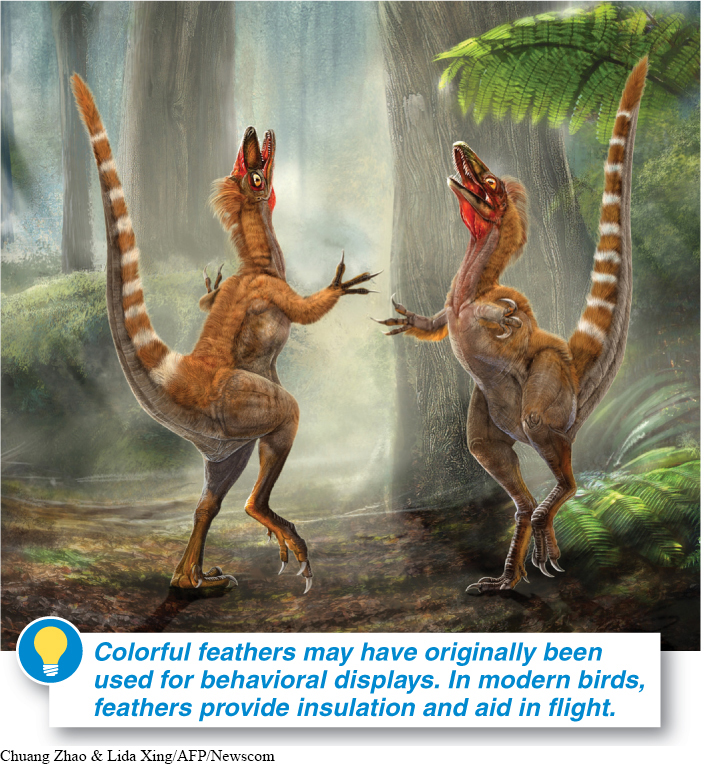Soon after amniotic vertebrates appeared, two different evolutionary lineages began to diverge (FIGURE 11-27). One of these lineages is the mammals, the group to which humans belong. The other lineage is the one referred to in this chapter as “reptiles (including birds).” That is an awkward term, but the evolutionary tree shows why it is necessary. Surprisingly, birds (about 9,700 species) are one branch of the reptile lineage that also includes snakes and lizards (about 8,000 species), turtles (about 300 species), crocodiles and alligators (23 species), the New Zealand tuatara (2 species)—and the dinosaurs.

The characteristics that hold the bird-
478
Birds are reptiles?
Most people find it confusing that birds are grouped with turtles, lizards and snakes, and alligators and crocodiles, and that confusion is easy to understand (FIGURE 11-28). After all, birds are covered by feathers and can fly, whereas the other reptiles have bare skin and do not fly. And there is an important physiological difference as well: birds are endotherms, meaning they use the heat produced by cellular respiration to raise their body temperature above air temperature, whereas other reptiles are ectotherms—they bask in the sun to raise their body temperature and seek the shade when the air is too warm.

How can animals as different as crocodiles and hawks be closely related? During the Mesozoic era, from about 250 million to 65 million years ago, dinosaurs were the dominant terrestrial vertebrates. The fossil record shows a remarkably clear series of animal forms that bridge the transition between bare-
What were the first feathers used for?
The most apparent difference between reptiles (including most dinosaurs) and birds is the presence of feathers in birds. The fossil record reveals that feathers evolved before birds. Fossil evidence also suggests that the initial evolution of feathers probably had nothing to do with flight.
Among reptiles, many different species had feathers. A small, agile dinosaur called Sinosauropteryx, for example, living about 120 million years ago, had feathers that were simple spiky filaments on its neck, back, and tail, along with shorter filaments covering its body (FIGURE 11-29). The 2010 discovery of fossilized pigment-

Another big difference between birds and reptiles is that, as noted earlier, birds use internally generated heat to maintain a high body temperature, whereas reptiles rely on the sun to heat their bodies. This evolutionary change may have been related to feathers. As feathers evolved for display and flight, they may also have provided some insulation. This insulation may then have enabled the evolution of high rates of cellular respiration and the maintenance of a high and constant body temperature.
479
TAKE-HOME MESSAGE 11.17
Birds are a branch of the reptile lineage but, unlike other reptiles, possess feathers and can generate body heat. The complex anatomical and physiological systems that we see in extant animals, such as feathers and endothermy in birds, are the products of hundreds of millions of years of step-
On what basis are birds considered to be a branch of reptiles?
Birds are classified as such because of similarities with reptiles in bones and DNA sequences. Some reptiles are more closely related to birds than they are to other groups of reptiles.